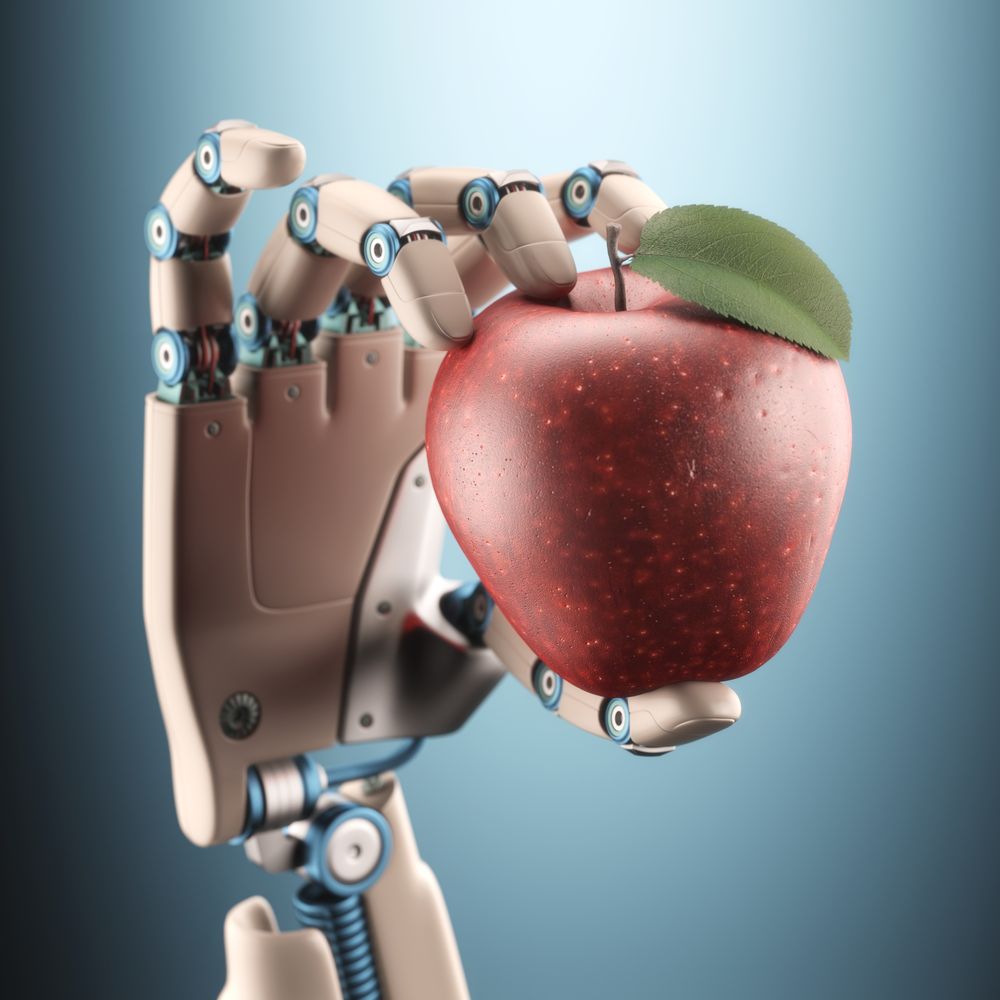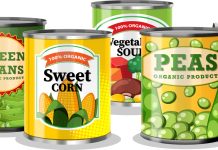 The market offers intelligent solutions to increase productivity through affordable automation systems that are adaptable to the entire production chain: from the beginning of the line to processing, from pick & place to handling, up to the end-of-line, even using automation platforms, providing flexible and high-performing management of the machines, with attention to sanitation and quality control issues.
The market offers intelligent solutions to increase productivity through affordable automation systems that are adaptable to the entire production chain: from the beginning of the line to processing, from pick & place to handling, up to the end-of-line, even using automation platforms, providing flexible and high-performing management of the machines, with attention to sanitation and quality control issues.
More and more companies in the food sector rely on automated production processes, in order to improve the results and the efficiency of the plants, regardless of their size. Computerised and automated production allows increasing the efficiency and productivity, to reduce safety risks, as well as to optimize the management of resources and improve their utilization. The market offers intelligent solutions to increase productivity through affordable automation systems affordable that can be adapted to the entire production chain.
In the food sector, in particular, automation contributes to improve pick&place and handling times, and to speed-up packaging processes, to the advantage of competitiveness, and with lower costs. Furthermore, automation allows food businesses to respond swiftly and flexibly to the continuous evolution of the market and to customers’ demands, with automated production processes that are very efficient, quick and accurate. The automation sector offer to food businesses countless specific applications, ranging from the start of the line to the processing, from pick&place to handling, up to the end-of-line.
An added value on the entire production chain. Robotics and automation can optimise production processes, accelerate and make the various typical controls of the food industry more precise. Modern robots are no longer stand-alone devices; they may be integrated in existing machines in the interests of efficiency, costs savings and safety. At the beginning of the production line, automation may be applied to the depalletising and loading phases, using robots capable of handling incoming goods, and of feeding the processing line.
Intelligent handling systems transfer raw materials and products via automated assembly and processing systems. They create a complete transport and positioning system, which can be integrated into existing processing applications. Also the subsequent handling cycles of ingredients or food can be automated with tailored solutions that obviously comply with the regulations on food and hygiene. For the preparation of the raw materials, food processing firms can rely on ingredients storage and mixing facilities, storage systems for liquid and semi-finished products, quantity controls by means of weighing or level filling, all of them entirely automated. This for the preparation and dosing of solid and liquid products using scrolls and volumetric pumps, in scales and litre-counters, systems for their mixing or kneading, on single or multiple stations with continuous feeding, as well as for processing.
All machines of the production line can be automated, including proofing cells, ovens, decoration and filling plants for bakery products. Automation established itself even in the various stages of food storage, with the control of ventilation, suction, and space heating. Through controlled and channelled ventilation, homogeneous flows are provided and supplied, whereby heat and humidity parameters are continuously monitored. Even CIP cleaning systems are automated. Packaging lines and, more generally, the end-of-line are the most frequently automated processes, using palletises, belt or roller conveyors, cartooning machines, strapping machines, boxing machines, as required for packaging on an industrial scale.
Attention to sanitation issues. Food processing firms need handling reproducibility, repeatability and accuracy, as well as safety in terms of hygiene and health protection. Washable motors and gearboxes provide simpler machine cleaning and shorter maintenance downtime. Companies continue to innovate with stepper motors, servomotors, direct drive motors, and with faster cleaning procedures.
Robots, with food-compatible lubricant, perform delicate operations with high accuracy and less waste. Scara (Selective Compliance Assembly Robot Arm) and anthropomorphic solutions are characterized by faster speed and accuracy, also thanks to special gripping tools, designed to adapt to the shape of the product of package, and which allow the robot to carry out delicate handling of the product even at high speeds. Food companies pay close attention to production lines efficiency, even from the point of view of hygiene and health, through equipment built with a hygienic design, i.e. with materials and design complying with the main standards and allowing perfect sanification.
Important aspects that are also met with the implementation of vision systems, ensuring an increasingly effective quality control. Track & trace systems, as for instance Datamatrix, RFID (Radio-Frequency Identification), OCR (Optical Character Recognition), and anti-counterfeiting systems are adopted by firms that want to ensure the complete control of the supply chain, and the authenticity of the food product, also in foreign markets. RFID solutions can also be applied even in case of limited value of the food to be tracked, focusing on the identification of the entire batch instead of the single product. Modern vision systems are well suited to the quality control, the identification and traceability of food products, also thanks to 3D inspection systems.
Even thermal imagers are used: easy to use and small in size, they can be placed almost anywhere and used for example to inspect the sealing of packages, or for no-contactless temperature measurements. For quality control, technologies are available that combine the use of metal detector, check-weighers and vision systems. These systems, however, cannot detect plastic, glass, foreign substances, paper, and bugs. For this reason, more and more companies prefer X-ray inspection technology, whose levels of radiation are so low that they do not create health problems.
Automation platforms. Always in the context of automated production control, food processing firms can find on the market automation platforms that allow a flexible and high-performing management of the machines used for the production of the product in question. They are also able to control the movement of mechanical machine components, manage the production lots and the different recipes, as well as control the flows of components and finished products.
These automation and processing solutions also allow creating and changing recipes, next to cutting cycle times. The solutions available on the market also allow the management of traceability, change control, product configuration, monitoring of laboratory inspections, thus improving efficiency. In automated systems, human-machine interaction is of vital importance. The software acts as Human Machine Interface (HMI), thanks to which the operator is able to check all the stages of production, even through the display of the main operation parameters (as in the case of valves closed or open, or machines still or function) and of measurements (such as temperature, pressure, flow rate, humidity and so on).
Energy efficiency. The food processing firms can choose between a wide variety of mechanical and/or electronic solutions, in order to ensure a safe, reliable, affordable and sustainable energy system, important issue for the food sector that has always been highly energyvorous. In particular, the range of motors is extremely wide: high-efficiency gearboxes, high efficiency IE4 motors, asynchronous brake motors and non-brake motors, Low Inertia and High Inertia Motors, and brushless sensorless motors. On the front of cost containment, there are solutions that allow gathering information from the PLC, in real time, on the consumption of electricity, water, air and gas to monitor the production efficiency.
The installation of specific consumptions supervising and monitoring systems contributes to optimize the management and use of the various devices and, consequently, their energy needs. Automated air conditioning solutions are designed to guarantee the safety of the production lines in terms of thermal conditioning, for example through ventilation systems, heat exchangers, while optimizing energy efficiency.
New solutions for outdated machinery. Many food firms have to operate with obsolete machinery that has higher management costs. Several companies specialising in automation propose a study of the line, in order to understand where and how to intervene to modernise production, from the point of view of the automation, aiming at improving the flexibility and quality of the product, and to the reduction of energy consumption. Solutions of Manufacturing Operations Management (MOM) allow companies to define the operations required to maintain high levels of production by coordinating people, processes and equipment. These solutions include the optimization of machinery and processes, bearing in mind the strategic objectives of the company such as the reduction of costs and quality control.
The digitization and automation of production processes can take place on one or more installations with the production of reports and analysis of data, which allow a better standardization of the production lines. The Manufacturing Execution System (MES) are software systems that, within a company, collect information from machines and operators to help understand how the current plant conditions can be optimized to enhance the production. MES systems may involve a series of operations within the entire productive cycle of a company, such as the progress of orders, production planning, real-time monitoring, traceability or maintenance. Analysing data, companies can take steps to understand any malfunctions in the production lines and strive to optimize production processes and improve efficiency.



